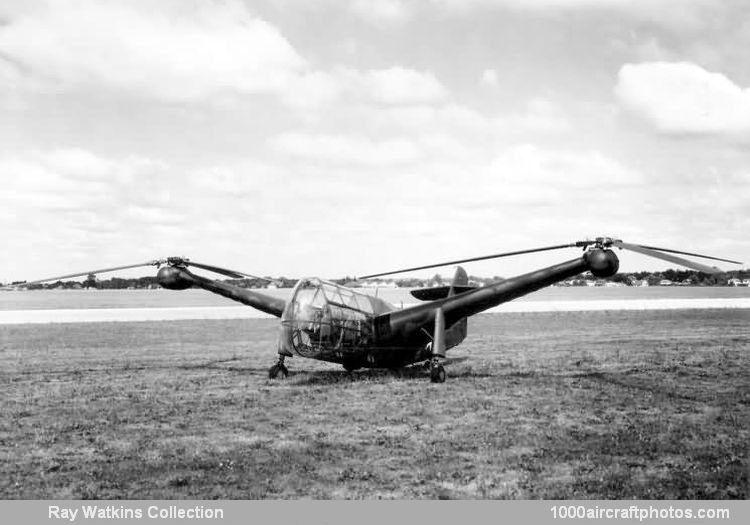04/30/2009. Remarks by Ray Watkins: "Dr. Wynn Laurence LePage worked for Pitcairn and Kellett, and was responsible for the Kellett K-2, K-3 and K-4 autogyros. He left Kellett in 1935 at which time he met and formed a partnership with Havilland H. Platt who held a number of rotary wing patents. LePage went to Germany in 1938 to negotiate a license for the Focke-Achgelis Fa-61, but the deteriorating political situation prevented the deal from proceeding.
In November 1938 Platt and Le-Page formed the Platt-LePage Aircraft Co. The pair began design of their own helicopter, the PL-1, which was a twin-rotor machine of similar configuration to the Fa-61. The USAAC issued specification XC-147 for an experimental rotary-wing aircraft in August 1939, and a design competition was initiated in April 1940. Platt-LePage offered a modified version of the PL-1 known as the PL-3.
Four of the offers were considered to be worthwhile; Vought-Sikorsky and Platt-LePage for helicopters and Kellett and Pitcairn for autogyros. Platt-LePage was awarded a contract in June 1940 for one prototype helicopter, designated the XR-1, and an airframe for static testing. The XR-1 (BuNo. 41-001) was completed in April 1941 and made its first constrained flight on May 12, 1941, with the first free flight occurring on June 23.
Testing over the next 12 months revealed numerous problems, the worst being inadequate control and resonant vibrations. In June 1943 Col H. F. Gregory flew the XR-1 at speeds up to 100 mph (160 kmh) but on July 4, the aircraft was damaged when a rotor blade detached during a speed run at Eddystone, Pennsylvania, test pilot Jim Ray sustained serious injuries.
A second prototype, designated the XR-1A, flew in October 1943 and was found to have better flying characteristics than the XR-1 although overall performance was still poor compared to its rival the Sikorsky R-4 which had already entered service. The XR-1A differed from the XR-1 mainly in having enlarged and strengthened tail surfaces and a full Plexiglas canopy with the pilot relocated to the rear seat instead of the front.
On October 26, the XR-1A crash landed after a gear failure in the right rotor hub, and was subsequently sold for scrap. However, it was repaired by the former XR-1 test pilot, Lou Leavitt of Helicopter Air Transport and was subsequently flown again, registered NX6950. Presently, parts of XR-1A are in storage at New England Air Museum.
The XR-1 rejoined the test program in August 1944, but on March 20, 1945, the development contract was cancelled. The XR-1 flew till June 21, 1946, whereafter it was presented to the Smithsonian Institution."
